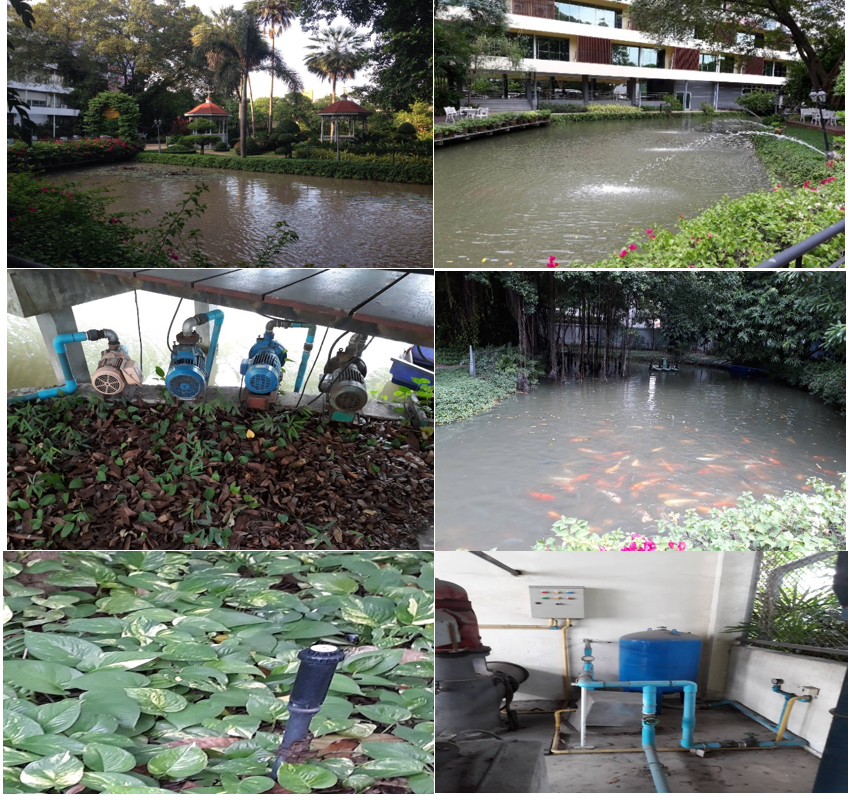WATER (WR)
Water Conservation Program Implementation
Water Conservation – Rain Water Collection
1. NIDA collects rainwater in the ponds as show in Figure at our campus for watering plants and using using in fish pond.
2. NIDA’s buildings have a sediment trap for collecting waste water and then it was sent to waste water treatment system. (Bio-turner plate) Waste water, after being treated, will be discharged into the pond (with a size of 3,400 cubic meters). And treated water was then reused for watering pant
3. Conserve water, use of water-saving equipment NIDA uses water-saving equipment in all buildings as follows - The sink faucet is automatic closing. - Urinals has an automatic sensor system with in order to prevent in case of power off. Additional evidence link: http://www.nida.ac.th/th/index.php/nida-campus
Water Recycling Program Implementation
Water Recycling Program
Treated water was being recycled water and used for garden sprinkler system and in fish pond. There are two types of wastewater treatment in the Institute which are
1. A combined waste water treatment (Bio turntable) designed to support 300 cubic meters of waste water per day. The system has an automatic control system that works all the time, Which receives waste water from four different buildings as follows.
1.1 NIDA Samphan Building and Parking Building
1.2 Ratchaphruek Buildin
1.3 Auditorium, Commemorative 6 around the King.
1.4 Chub Kanchanaphon Building
The four buildings have a sediment trap and their waste water was sent to the central waste water treatment system. (Bio-turner plate) As the waste water, is being treated, it will be discharged into the pond (with a size of 3,400 cubic meters).
In the pond, there are two which work suitch with fountains. The water garden pond has an overflow drain into the pumping station 1 (behind Nida Samphan Building) in order to drain into the Saen Saep canal and to pump the water back to reuse for watering a tree. Quality is monitored by observing the color and odor of the water (water quality indicators Including koi fish that are raised in the ponds of the water park)
2. Mechanical wastewater treatment by aeration system Is a which is designed to be built together with the building at first and there is work automatic control system for full time working. The six buildings are as follows:
2.1 Nawamintharathirat Building
2.2 Siam Boromrajakumari Building
2.3 Narathiphongpraphan Building
2.4 Boonchana Atthakan Building
2.5 Malai Hwanan Building
2.6 Nida House Building
2.7 Serithai Building
Waste water from seven buildings after the treatment process of each building Will be released into the rainwater pipes and flows into the pumping station 1 (Behind Nida Samphan Building) Pumping Station 2 (between Chub Kanchanapakorn Building and Nida Samphan Building) and Pumping Station 3 (behind the Malai Huawanan Building) There are discharged into the San Saeb canal And pumped to water the plants The water quality test is monitored by observing the color and odor of the water.


